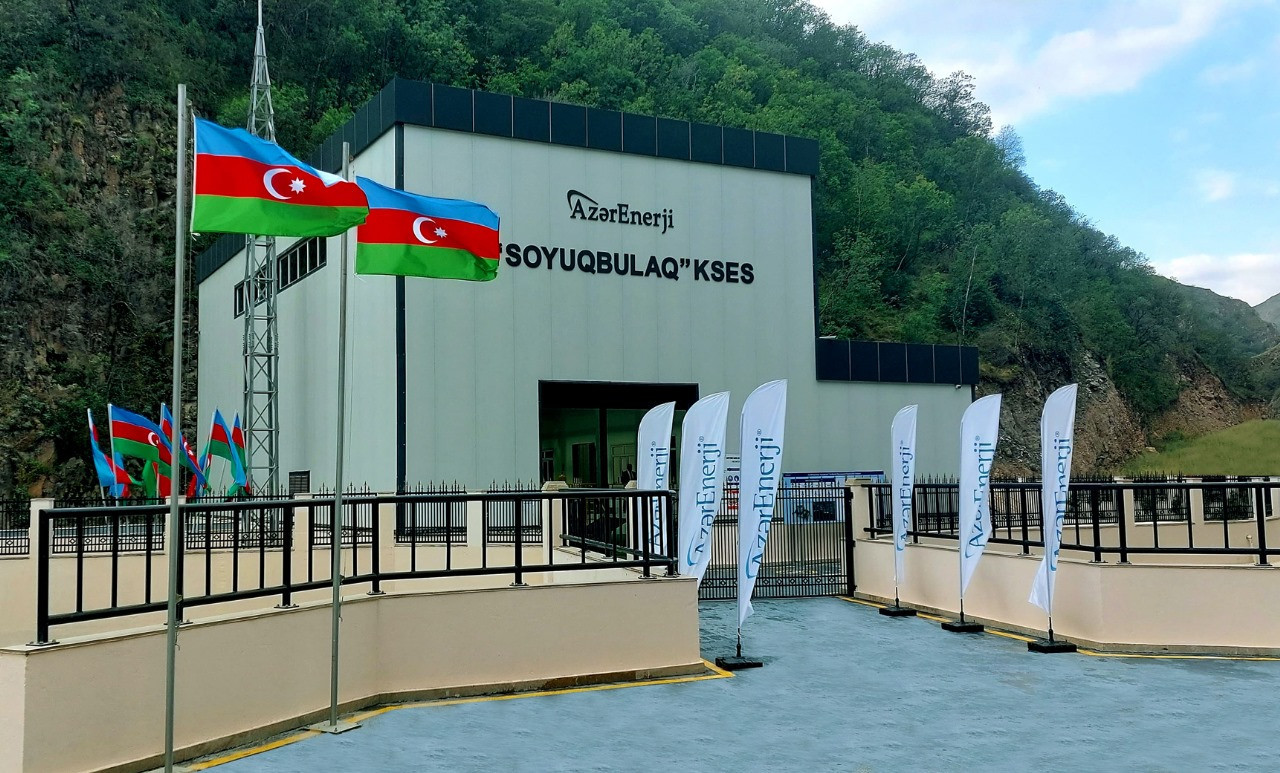BAKU, Azerbaijan, June 24. The relevance of using green energy is growing around the world, Trend reports.
Azerbaijan is one of the countries with high potential in the field of renewable energy sources, which has identified specific goals related to the development of this industry and is implementing a rapid transition to green energy.
The holding of such a prestigious event as COP29 in Azerbaijan and Azerbaijan’s fulfillment of its climate commitments indicate a high level of political and economic stability.

The expansion of green energy production in the country takes an important place in the "Azerbaijan 2030: National Priorities for Socio-Economic Development" program approved by the President of the Republic of Azerbaijan, Ilham Aliyev.
Azerbaijan's goal in terms of overall energy production is to increase the share of renewable energy sources to 24 percent by 2025 and to 30 percent by 2030.
According to statistical data, the technical potential of the country's renewable energy sources is 135 gigawatts on land and 157 gigawatts in the Azerbaijani sector of the Caspian Sea.
The economic potential of renewable energy sources is 27 gigawatts, including 3,000 MW from wind energy, 23,000 MW from solar energy, and 380 MW from bioenergy.
The potential of mountain rivers is estimated at 520 MW.
The liberated Karabakh and Eastern Zangezur regions, as well as Nakhchivan, have been declared green energy zones in Azerbaijan.
The transition to green energy in the liberated territories is a significant strategic goal for Azerbaijan.
To accomplish the task of creating a green energy zone in the liberated territories, a contract has been signed with the Japanese TEPSCO company.
A corresponding concept and General Plan have been developed for the energy supply of the region in connection with the creation of the green energy zone.
The green energy potential of the liberated lands of Azerbaijan is enormous.
For instance, in terms of the amount of solar radiation reaching the Earth's surface, the Zangilan, Jabrayil, Gubadli, and Fuzuli districts rank second after Nakhchivan.
According to the latest estimates, the territories of Karabakh and Eastern Zangezur have a solar and wind energy potential of 10 gigawatts.
The Gubadli, Zangilan, Jabrayil, Khojavand, and Fuzuli districts have favorable conditions for using solar energy with a technical potential of over 7,200 MW.
Additionally, the preliminary forecast for the technical potential of wind energy in the mountainous regions of Lachin and Kalbajar districts is estimated at 2,000 MW.
Increasing attention is paid to the potential use of geothermal energy sources as green energy in the Kalbajar, Aghdara, and Shusha districts.
According to preliminary analysis, the Kalbajar district is assumed to have thermal water reserves of 3,093 cubic meters per day, and Shusha has 412 cubic meters per day.
The use of geothermal energy sources in energy production and consumption generally does not require significant financial resources.
Wind power plants will be constructed in Lachin and Kalbajar.
Next year, BP will lay the foundation for the Shafag (Sunrise) solar power plant with a capacity of 240 MW in Jabrayil.
Additionally, sites for the construction of solar power plants are being coordinated with Nobel Energy in Jabrayil and a Chinese company in Fuzuli.
The prospect of transmitting electricity to Nakhchivan, and from there to Türkiye and then to Europe through the Jabrayil energy hub, embodies the great strategic vision of the President of Azerbaijan, Ilham Aliyev, and the focused efforts to implement it.
In 2022, the foundation for the Jabrayil energy hub with a capacity of 330 kV was laid as part of the Azerbaijan-Türkiye-Europe International Energy Project.
Last month, the "Khudafarin" and “Giz Galasi” hydroelectric complexes were launched on the Araz river at the state border between Azerbaijan and Iran.
The hydroelectric power plants of the same name, with a total installed capacity of 140 MW for each side, will serve the interests of both countries on a parity basis.
This project will enable Azerbaijan to produce 358 million kilowatt-hours of electricity annually and save 80 million cubic meters of gas.
"Khudafarin" and "Gyz Galasi" will become crucial elements in the development of Eastern Zangezur as a green energy zone.
The Jabrayil energy hub, to which the plants will be connected, will serve as a new energy link between Eastern Zangezur and Nakhchivan.
Large rivers such as Tartar, Bazarchay, Hakarichay, and other smaller rivers in the liberated territories have significant hydroelectric potential.
To create the green energy zone being implemented in Karabakh and the Eastern Zangezur regions, 72 small hydropower plants with a total capacity of 467 MW will be built by 2030.
In less than three years, 28 hydropower plants with a total capacity of 226 MW have been reconstructed or built in the region.
Installation and commissioning work is underway at four hydropower plants with a total capacity of 44 MW.
As a result, a sustainable power supply scheme has been created throughout the region, and in the first half of 2024, declared the "Year of Solidarity for a Green World," 32 hydropower plants with a total capacity of 270 MW will be commissioned.
These plants will produce more than 600 million kilowatt-hours of green energy annually, saving over 160 million cubic meters of natural gas and reducing CO2 emissions by more than 330,000 tons.
Additionally, tender procedures have begun for the implementation of a project involving six small hydropower plants with a total capacity of 37.5 MW.
The plants from these projects are expected to be commissioned next year, indicating the accelerated transition to green energy, reducing CO2 emissions, saving natural gas, and producing environmentally friendly energy.
The use of green energy is planned for all cities and villages in the liberated territories.
All cities and villages in the liberated territories are designated for the use of green energy. According to the developed concept for creating solar and wind power plants in the Karabakh and Eastern Zangezur economic regions, the electricity consumed in these territories will come exclusively from renewable energy sources, already yielding positive results.
Thus, for the first time in the country's energy system history, the electricity needs of the Karabakh and Eastern Zangezur regions are being met by 100 percent green energy, with any surplus being transferred to the national power system.
Considering future projects, the total capacity of green energy projects being implemented in the Karabakh and Eastern Zangezur economic regions is 1,100 MW, which is 12–15 times the current energy needs of the region.
The total energy demand for the region by 2040 is projected to be 1,000 MW, meaning that in 20 years, the region will be fully supplied with green energy, given the volume of ongoing green energy projects.
Following the liberation of Azerbaijani lands, the infrastructure destroyed by Armenians began to be restored.
The concept of a green economy has started to be implemented in these regions, with specific steps already being taken in this direction.
These processes began with the construction of Aghali village in the Zangilan district based on the concepts of 'smart city' and 'smart village'.
All residential houses, social facilities, administrative buildings, and catering buildings, as well as the processing and production of agricultural products, are powered by alternative energy sources.
Today, modern urban planning standards have been applied in Aghali village, such as 'smart' street lighting, the construction of eco-friendly houses that are resistant to heat and cold, and the installation of solar panels.

Besides, to provide the village with constant energy, a hydroelectric power plant was built on the Hakari river.
In addition, Bash Garvand village in the Aghdam district is also being built under the 'smart village' project.
In order to save on energy resources, the village will use alternative energy.
Dovlatyarli village in Fizuli district is also being built according to the concept of a 'smart village'.
Due to the large number of sunny days in Fuzuli, the village’s energy needs will be met by solar panels that will be installed on an area of 50 hectares.
The capacity of the investment project will be 50 MW.
In addition, Lachin city itself, Zabukh, and Sus villages are using green technologies.

Solar panels with a capacity of three kW have been installed on 223 private houses in Zabukh and 59 in Sus.
Green energy is also used in restored schools, kindergartens, and government institutions.
For example, solar panels with a capacity of 40 kW have been installed on the roof of a renovated school in the Fuzuli district.
The Innovative Electric Grid Technologies Center in Shusha city has applied green energy technologies.
The center has facilities for charging electric vehicles and solar panels.
A Smartflower solar power installation has been set up in Khojaly.
This installation has a capacity of 2.5 kW and generates 6,500 kWh of green energy annually.
In addition to energy production, this device will also serve as a charging station for electric vehicles, bicycles, and scooters.
Connecting Khankendi to the national power system and providing electricity to the republic's territories through the Shusha substation are proud milestones in the history of the country's electricity sector.
One of the factors affecting climate change is carbon emissions into the atmosphere.
Therefore, various efforts are underway in the liberated territories to increase the transition to electric vehicles.
As a result, Shusha will become the first city in Karabakh to operate electric buses.
Additionally, 20 electric vehicle charging stations are planned to be opened in Karabakh by the end of the year.
All necessary measures are taken to prevent damage to the environment during the construction of railways. On the 85th km of the Horadiz-Aghband line, near the Minjivan station, in agreement with the Ministry of Ecology and Natural Resources, trees were carefully replanted in order not to damage the forest.
Every effort is made to ensure that no damage to the environment is caused during the construction of railways.
Every project of Azerbaijan Railways CJSC (ADY) pays special attention to planting trees along the railway line.
As part of the Barda-Aghdam project, pine trees and other types of trees have already been planted.

Azerbaijan is a leader in the region in the use of innovative approaches aimed at the transition to green energy and is making a significant contribution to combating the effects of climate change.
Green energy projects are among the most important for preserving the natural climate of the Earth.
Azerbaijan also strives to protect the country's nature through green energy projects and contributes to the conservation and protection of the Earth.
Stay up-to-date with more news at Trend News Agency's WhatsApp channel








